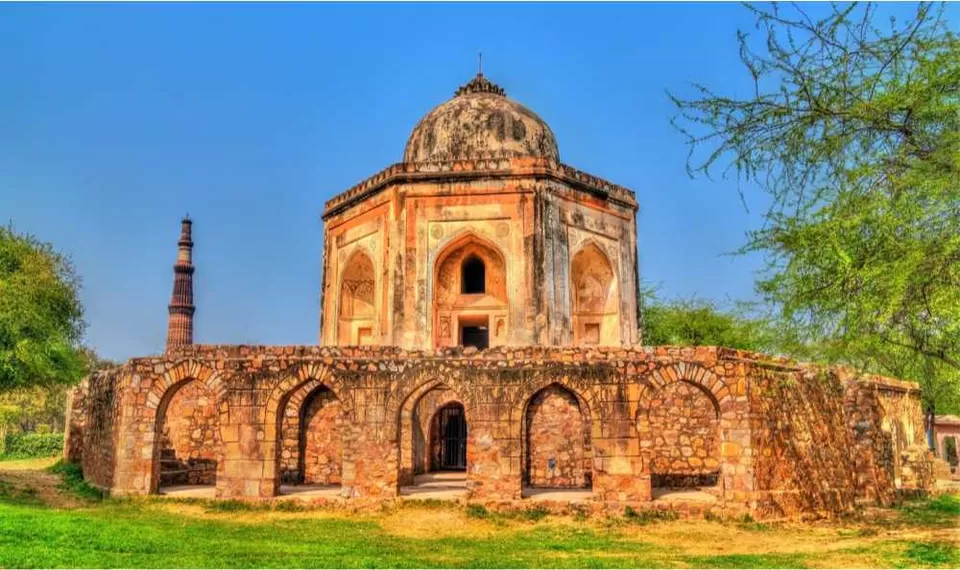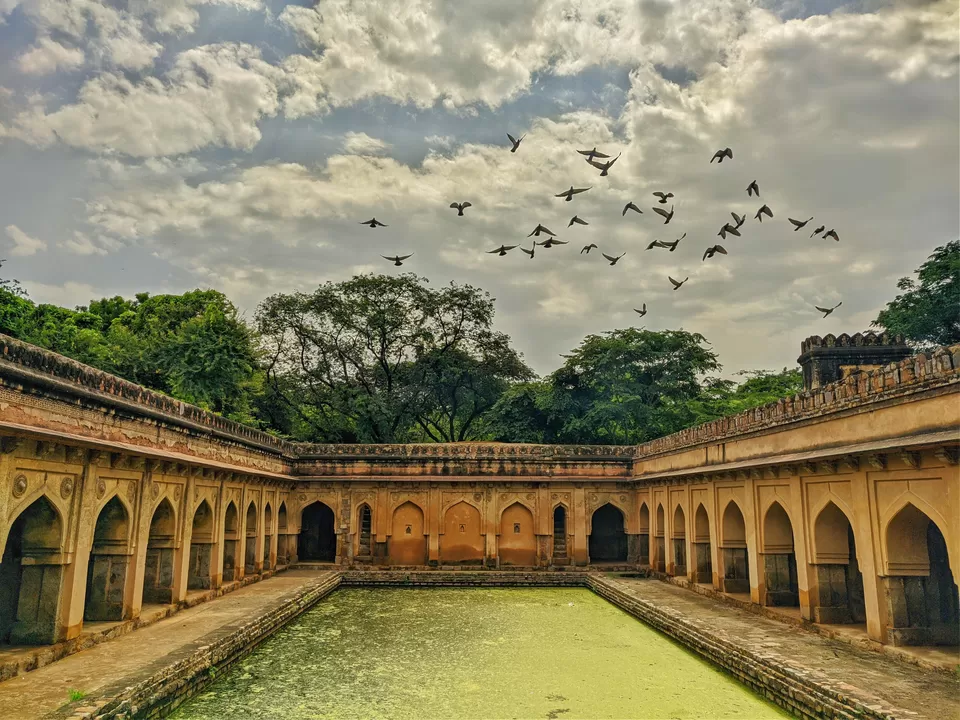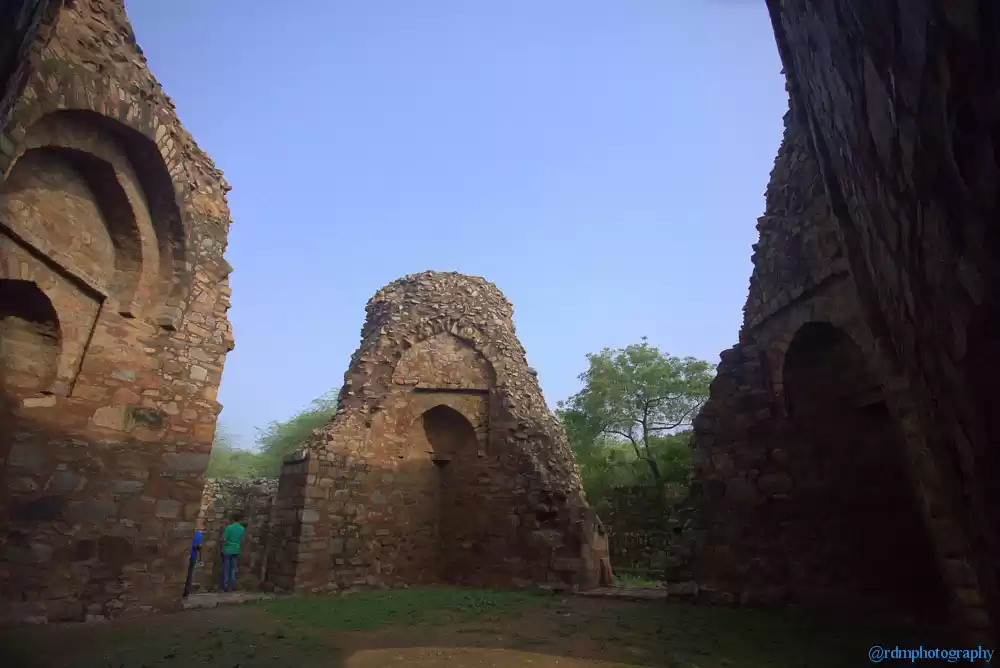Have you ever wondered what lies beyond the Qutub Minar, the iconic tower that symbolizes Delhi? If you are curious to know more about the city's rich and diverse heritage, then you should visit the Mehrauli Archaeological Park, a sprawling area that has over 100 monuments from different periods of Delhi's history. From the 10th century to the British era, the park showcases the evolution and transformation of the city, its culture, and its people.
In this article, we will take you on a journey through the park, its attractions, and its stories. We will also give you some practical tips on how to visit the park and make the most of your experience. Whether you are a history buff, a nature lover, or a culture enthusiast, you will find something to enjoy and appreciate in the Mehrauli Archaeological Park.

History of the Park
The Mehrauli Archaeological Park is not just a park, but a living museum of Delhi's heritage. The park was the site of the first city of Delhi, Lal Kot, founded by the Tomar Rajputs in the 10th century. Later, it became a cultural and religious hub for various dynasties and rulers, such as the Slave Dynasty, the Khilji Dynasty, the Tughlaq Dynasty, the Lodi Dynasty, the Mughal Empire, and the British Raj. Each of these periods left behind their mark on the park, in the form of monuments, tombs, mosques, palaces, baolis (stepwells), and gardens. The park also witnessed some of the most significant events and personalities of Delhi's history, such as the invasion of Timur, the reign of Akbar, the revolt of 1857, and the last Mughal emperor Bahadur Shah Zafar. The park is a testament to the diversity and richness of Delhi's heritage, as it reflects the influences of various cultures, religions, and styles.
Some of the historical periods and events that shaped the park are:
- The Slave Dynasty (1206-1290): The first Muslim dynasty to rule Delhi, founded by Qutub-ud-din Aibak, who also built the Qutub Minar. The park has several monuments from this period, such as the tomb of Balban, the first ruler to use the title of Sultan, and the tomb of Qutub-ud-din Bakhtiyar Kaki, a revered Sufi saint.
- The Khilji Dynasty (1290-1320): The second Muslim dynasty to rule Delhi, founded by Jalal-ud-din Khilji, who also expanded the Qutub Complex. The park has some of the most impressive monuments from this period, such as the Alai Minar, an unfinished tower that was meant to rival the Qutub Minar, and the Alai Darwaza, a magnificent gateway that showcases the Indo-Islamic architecture.

- The Tughlaq Dynasty (1320-1414): The third Muslim dynasty to rule Delhi, founded by Ghiyas-ud-din Tughlaq, who also built the Tughlaqabad Fort. The park has some of the most unique monuments from this period, such as the tomb of Ghiyas-ud-din Tughlaq, a fortress-like structure that is surrounded by a moat, and the tomb of Muhammad bin Tughlaq, a controversial ruler who shifted the capital from Delhi to Daulatabad and back.
- The Lodi Dynasty (1451-1526): The fourth and last Muslim dynasty to rule Delhi, founded by Bahlul Lodi, who also built the Lodi Gardens. The park has some of the most elegant monuments from this period, such as the tomb of Sikandar Lodi, a graceful octagonal structure that is set in a garden, and the tomb of Muhammad Quli Khan, a nobleman who was the brother of Adham Khan, a general of Akbar.
- The Mughal Empire (1526-1857): The most powerful and influential Muslim empire in India, founded by Babur, who also defeated the last Lodi ruler in the Battle of Panipat. The park has some of the most splendid monuments from this period, such as the Zafar Mahal, a palace that was built by Akbar II and expanded by Bahadur Shah Zafar, the last Mughal emperor, and the Dargah of Qutub Sahib, a shrine that is dedicated to the successor of Qutub-ud-din Bakhtiyar Kaki and is visited by devotees of all faiths.
- The British Raj (1858-1947): The colonial rule of India by the British, who also built the New Delhi as the capital. The park has some of the most interesting monuments from this period, such as the Metcalfe House, a residence that was owned by Sir Thomas Metcalfe, a British officer who also renovated some of the monuments in the park, and the Boathouse, a structure that was used by Metcalfe to enjoy boating on the lake.

Attractions of the Park
The Mehrauli Archaeological Park has more than 440 monuments, each with its own history, story, and legend. It is impossible to cover all of them in one article, so we will focus on some of the main attractions that you should not miss when you visit the park. Here are some of the monuments that you should see and learn about in the park:
- Balban's Tomb: The tomb of Ghiyas-ud-din Balban, the Sultan of Delhi from 1266 to 1287, who was also the founder of the Slave Dynasty. The tomb is a simple and austere structure, made of rubble masonry and plaster. It is notable for being the first Islamic tomb in India to have a true arch and a dome, which were later adopted by other monuments. The tomb also has a grave chamber, where the remains of Balban and his son Khan Shahid are buried. The tomb is surrounded by a large enclosure, which has several other tombs and ruins.
- Jamali Kamali Mosque and Tomb: The mosque and tomb of Jamali and Kamali, two poets and mystics who lived in the 16th century. Jamali was the pen name of Shaikh Fazlullah, who was also a court poet of Sikandar Lodi and Humayun. Kamali was the pen name of Shaikh Kamal, who was Jamali's disciple and companion. The mosque is a beautiful example of the Lodi style of architecture, with a red sandstone facade, a large prayer hall, and five arched mihrabs. The tomb is adjacent to the mosque, and has a marble chamber, where the graves of Jamali and Kamali are located. The tomb is decorated with colorful tiles, inscriptions, and paintings, which display the verses of Jamali's poetry.
- Rajon ki Baoli: A baoli or a stepwell, that was built by Daulat Khan during the reign of Sikandar Lodi in the 16th century. The baoli is named after the rajon or the masons, who used to live and work in the nearby area. The baoli is a four-storeyed structure, with a rectangular tank at the bottom, and a series of steps and chambers on the sides. The baoli was used for water storage, irrigation, and social gatherings. The baoli also has a mosque, a well, and a tomb within its complex.

- Metcalfe House: A residence that was owned by Sir Thomas Metcalfe, a British officer who was also the agent of the Governor-General of India at the Mughal court. Metcalfe bought the house in 1830, and modified it according to his taste and style. He added Gothic windows, castellated walls, and a canopy to the house, and also renovated some of the monuments in the park, such as the Quli Khan's Tomb, the Boathouse, and the Dilkhusha. He also created a landscaped garden around the house, and named it Dilkusha or the 'Heart's Delight'. The house was damaged during the revolt of 1857, and is now in ruins.
- Zafar Mahal: A palace that was built by Akbar II in the early 19th century, and expanded by Bahadur Shah Zafar in the mid-19th century. The palace was named after Zafar, who was the last Mughal emperor and also a poet and a musician. The palace was the summer retreat of the Mughal emperors, and also the site of the annual festival of Phoolwalon ki Sair, or the 'Procession of the Florists'. The palace has a grand entrance, called the Hathi Gate or the 'Elephant Gate', which has two stone elephants on its sides. The palace also has a courtyard, a pavilion, a hammam, and a mosque within its premises.
- Hijron ki Khanqah: A khanqah or a hospice, that was built for the hijras or the eunuchs, who were also the caretakers of the Dargah of Qutub Sahib. The khanqah was built by a nobleman named Malik Maqbul in the 15th century, and is one of the few monuments dedicated to the hijra community in India. The khanqah has a simple and serene structure, with a central hall, a verandah, and a graveyard. The khanqah is still inhabited by some hijras, who perform rituals and offer blessings to the visitors.
These are some of the main attractions of the park, but there are many more monuments and ruins that you can explore and discover on your own. You can also enjoy the natural beauty and wildlife of the park, as it is home to various birds, animals, and plants. The park is a perfect place to experience the history and culture of Delhi, in a peaceful and picturesque setting.

How to Visit the Park
If you are interested in visiting the Mehrauli Archaeological Park, here are some practical and useful information that you should know:
- Location: The park is located in Mehrauli, South Delhi, adjacent to the Qutub Complex. The park has two main entrances, one near the Qutub Minar Metro Station, and the other near the Mehrauli Bus Terminal.
- Timing: The park is open from sunrise to sunset, every day of the week. The best time to visit the park is in the morning or evening, when the weather is pleasant and the light is ideal for photography.
- Entry Fee: The park is free for everyone, and there is no ticket or registration required. However, you may have to pay a nominal fee for some of the monuments, such as the Zafar Mahal and the Metcalfe House, which are maintained by the Archaeological Survey of India (ASI).
- Facilities: The park has basic facilities, such as drinking water, toilets, and benches. However, there are no food stalls, shops, or guides available in the park. You should carry your own snacks, water, and map, and do some research before visiting the park. You should also wear comfortable shoes, clothes, and hats, and carry sunscreen, sunglasses, and a camera.
- Guided Tours: If you want to learn more about the park and its monuments, you can opt for a guided tour or a walk, offered by various groups and organizations, such as Delhi Karavan, Delhi Heritage Walks, or Tripadvisor. These tours and walks are usually conducted on weekends, and have different themes, durations, and prices. You can book your tour or walk online, or contact the organizers directly.

Conclusion
The Mehrauli Archaeological Park is a hidden gem of Delhi, that offers a glimpse into the city's glorious past and diverse heritage. The park has a plethora of monuments, stories, and legends, that will fascinate and inspire you. The park is also a haven of nature and wildlife, that will refresh and rejuvenate you. The park is a must-visit for anyone who loves history, culture, and beauty. So, what are you waiting for? Plan your visit to the Mehrauli Archaeological Park today, and discover Delhi's hidden heritage.





























